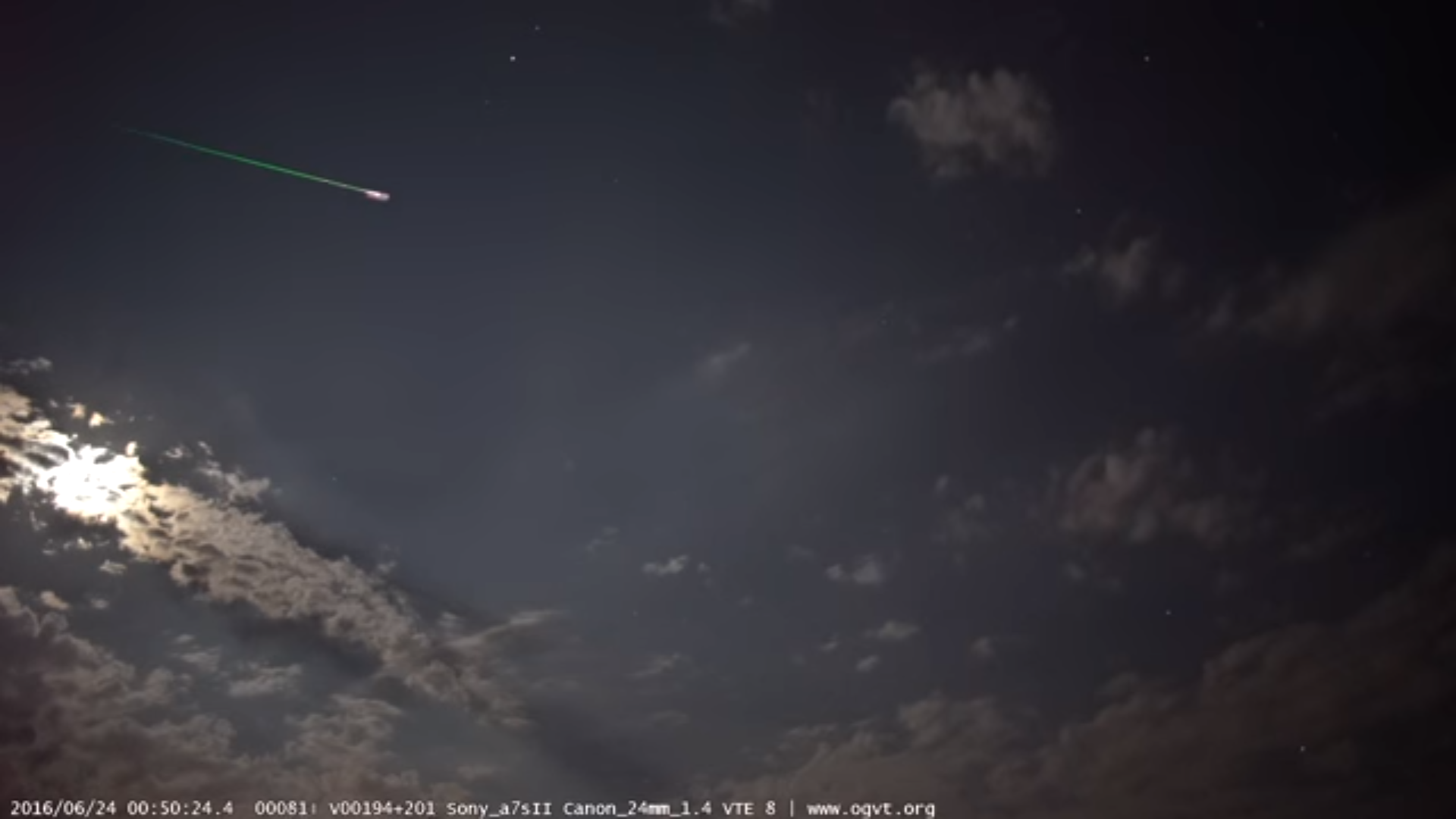Secretary General of the International Meteor Organization
Sporadic meteors are usually considered as random occurrences not associated with any particular meteor shower. In fact there are areas of the sky which continually produce activity not associated with any known showers.
There are six known sources of sporadic activity. They are called the Helion, Antihelion, Northern Apex, Southern Apex, Northern Toroidal, and Southern Toroidal sources. The meteors from the Helion source are from an area near the sun’s location in the sky and rarely seen visually. The word ‘Helion’ comes from the Greek ‘helios’ meaning sun.
The two Toroidal sources refer to debris in orbits highly inclined to the ecliptic. They are not well known and are in need of study before accurate positions can be published.
This leaves the two Apex sources plus the Antihelion source as possible targets for the visual meteor observer. The difficulty in shower association with these sources is the large size of the radiant areas compared to the tight radiants for the major annual showers. The radiants can be as large as 20 degrees by 20 degrees which may encompass several constellations. If the observer is aware of the nightly positions of these sources and the fact that these meteors vary in apparent velocity, according to their distance from the radiant, then it may be possible to identify potential members of these sources.
The first source active each night is the Antihelion radiant. These meteors are produced by low inclination particles in direct orbit around the sun that intercept the Earth at a perpendicular angle. The position of this radiant is on the ecliptic, 195 degrees east of the sun (or 165 degrees west). This places it in the opposite portion of the sky from the sun. This means it will rise in the east shortly after sunset and will be visible the remainder of the night. It is best seen near 0100 local standard time when it culminates in the southern or northern sky, depending upon your observing location. Since they encounter the Earth in a “broadside” direction their actual velocity will be neither slow or fast, but rather somewhere in between. Their observed velocity will appear slower than most meteors, especially when meteors are seen near the radiant as these meteors will be coming right at the observer and foreshortening will occur. Meteors seen far from the radiant will appear a bit faster as they produce longer paths in the sky. The reason these meteors do not have a radiant exactly opposite the sun (180 degrees) is an effect called the “Apex Attraction”. The motion of the Earth causes the apparent radiant of all of these sporadic sources to be shifted towards the direction the earth is traveling in space.
The two Apex sources are produced by debris orbiting in a retrograde motion, encountering the earth in a “head-on” direction. This is essentially material hitting the earth’s “front windshield” as we move through space. There is a distinct lack of low inclination particles from this source which creates the double radiant located 15 degrees north and 15 degrees south of the ecliptic, 90 degrees west of the sun. This area of the sky does not rise until midnight local standard time. Therefore, these meteors are strictly a morning display and are best seen just before the start of morning twilight, when the radiants are highest in the sky. Since these meteors strike the Earth from a “head-on” direction they will appear swift, and often long, except near the radiant, where foreshortening will create short paths in the sky.
All of these sources produce low activity and rarely exceeds 5 meteors per hour to the unaided eye. They are of little interest to the casual meteor observer but they offer observers, especially those who plot, an opportunity to recognize some interesting sources of meteor activity.






Комментариев нет:
Отправить комментарий